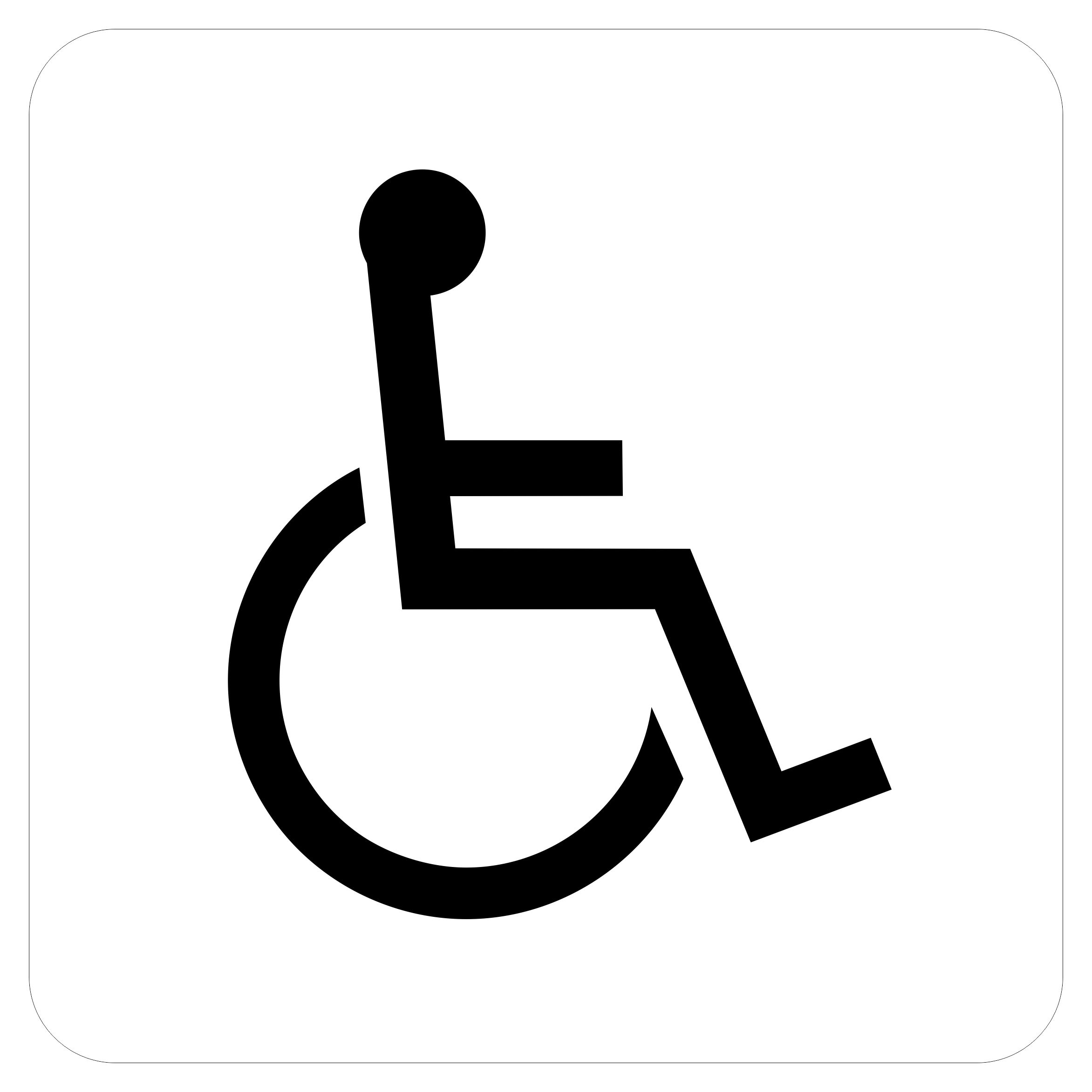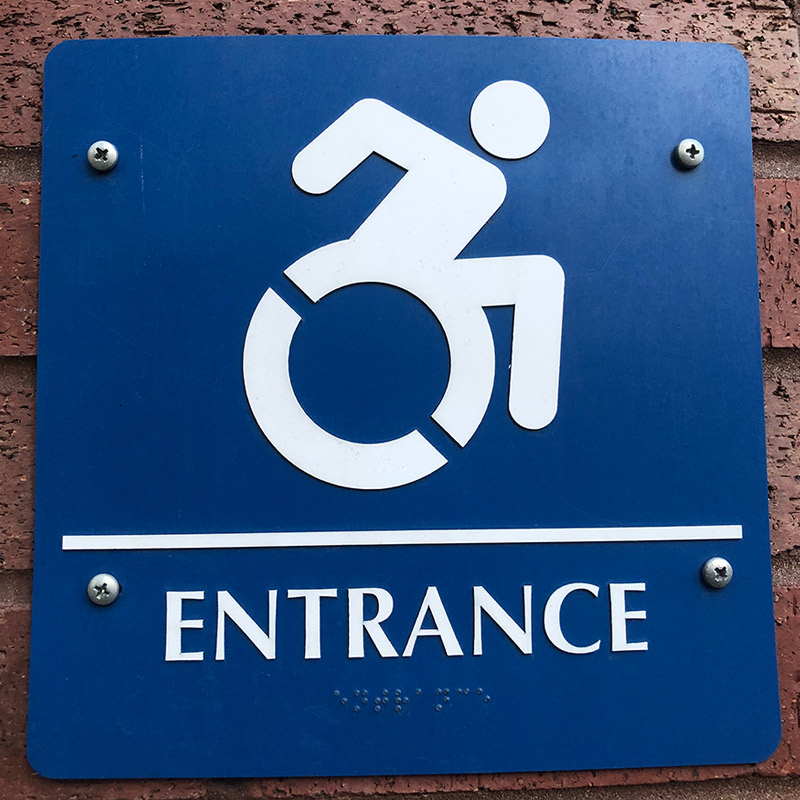ADA Signs: Crucial Tools for Inclusive Atmospheres
ADA Signs: Crucial Tools for Inclusive Atmospheres
Blog Article
Checking Out the Secret Features of ADA Indicators for Boosted Accessibility
In the world of ease of access, ADA indicators serve as silent yet effective allies, making sure that areas are inclusive and navigable for people with impairments. By incorporating Braille and responsive aspects, these indicators damage obstacles for the aesthetically impaired, while high-contrast color systems and understandable font styles cater to varied visual requirements.
Value of ADA Conformity
Making certain compliance with the Americans with Disabilities Act (ADA) is essential for cultivating inclusivity and equal gain access to in public rooms and workplaces. The ADA, enacted in 1990, mandates that all public facilities, companies, and transport solutions fit people with disabilities, ensuring they delight in the exact same rights and opportunities as others. Conformity with ADA standards not only satisfies legal commitments however likewise enhances a company's reputation by showing its dedication to variety and inclusivity.
Among the crucial elements of ADA conformity is the application of accessible signs. ADA indicators are designed to ensure that individuals with disabilities can quickly browse via rooms and structures. These signs must abide by specific guidelines regarding size, font, shade comparison, and positioning to assure presence and readability for all. Properly implemented ADA signage aids eliminate barriers that people with disabilities typically come across, thus promoting their freedom and confidence (ADA Signs).
Additionally, adhering to ADA policies can reduce the danger of legal effects and prospective fines. Organizations that stop working to abide with ADA guidelines might deal with charges or lawsuits, which can be both damaging and financially burdensome to their public photo. Hence, ADA conformity is essential to promoting a fair environment for every person.
Braille and Tactile Elements
The unification of Braille and responsive components into ADA signs embodies the principles of availability and inclusivity. It is normally placed below the matching text on signage to ensure that individuals can access the info without visual help.
Responsive aspects prolong beyond Braille and include raised characters and signs. These parts are made to be noticeable by touch, enabling people to determine area numbers, toilets, departures, and other vital areas. The ADA establishes particular standards pertaining to the dimension, spacing, and positioning of these tactile elements to enhance readability and guarantee consistency across various settings.

High-Contrast Shade Schemes
High-contrast color design play an essential role in boosting the visibility and readability of ADA signs for individuals with aesthetic disabilities. These schemes are crucial as they make the most of the distinction in light reflectance in between text and history, guaranteeing that indicators are conveniently discernible, also from a distance. The Americans with Disabilities Act (ADA) mandates the usage of specific color contrasts to fit those with minimal vision, making it a critical aspect of compliance.
The efficiency of high-contrast colors hinges on their ability to stick out in various lights conditions, including dimly lit environments and locations with glow. Usually, dark message on a light background or light message on a dark background is utilized to achieve optimal contrast. Black text on a white or yellow history gives a stark visual difference that helps in quick recognition and understanding.

Legible Fonts and Text Size
When thinking about the design of ADA signage, the option of clear fonts and appropriate text dimension can not be overemphasized. The Americans with Disabilities Act (ADA) mandates that typefaces need to be not italic and sans-serif, oblique, script, highly attractive, or of unusual kind.
The dimension of the message also plays a crucial duty in availability. According to ADA standards, the minimum message elevation ought to be 5/8 inch, and it should increase proportionally with viewing range. This is particularly important in public rooms where signage needs to be read quickly and properly. Consistency in message size adds to a natural aesthetic experience, aiding people in navigating settings effectively.
Additionally, spacing between lines and letters is important to readability. Appropriate spacing prevents characters from appearing crowded, enhancing readability. By adhering to these standards, designers can substantially enhance navigate to this site accessibility, making certain that signage serves its desired purpose for all individuals, despite their visual abilities.
Reliable Placement Techniques
Strategic positioning of ADA signage is crucial for making best use of ease of access and making sure conformity with lawful criteria. Properly positioned signs lead people with specials needs properly, assisting in navigation in public areas. Trick considerations consist of exposure, elevation, and distance. ADA guidelines stipulate that indications should be mounted at a height in between 48 to 60 inches from the ground to guarantee they are within the line of sight for both standing and seated individuals. This common elevation range is important for inclusivity, enabling wheelchair customers and individuals of differing heights to access info effortlessly.
In addition, indications must be positioned surrounding to the lock side of doors to allow simple identification prior to entry. Uniformity in indicator placement throughout a center enhances predictability, lowering confusion and enhancing overall customer experience.

Final Thought
ADA indicators play an important duty in promoting access by integrating functions that attend to the demands of individuals with handicaps. Incorporating Braille and tactile components makes certain crucial info comes to the aesthetically impaired, while high-contrast color systems and clear sans-serif typefaces boost visibility throughout different illumination problems. Effective placement strategies, such as suitable installing heights and calculated places, better facilitate navigation. These elements jointly cultivate a comprehensive atmosphere, emphasizing the relevance of ADA conformity in ensuring equivalent accessibility for all.
In the realm of accessibility, ADA signs serve as quiet yet effective allies, guaranteeing that spaces are accessible and comprehensive for people with handicaps. The ADA, passed in 1990, mandates that all public facilities, companies, and transport solutions suit people with handicaps, guaranteeing they enjoy the exact same rights and possibilities as others. ADA Signs. ADA signs are made to ensure that people with disabilities can quickly navigate through structures and rooms. ADA guidelines stipulate that indications ought to be installed at an elevation between 48 to 60 inches from the ground to ensure they are within the line of view for both standing and seated individuals.ADA indicators play a crucial role in advertising accessibility by incorporating you can look here attributes that attend to the needs of people with disabilities
Report this page